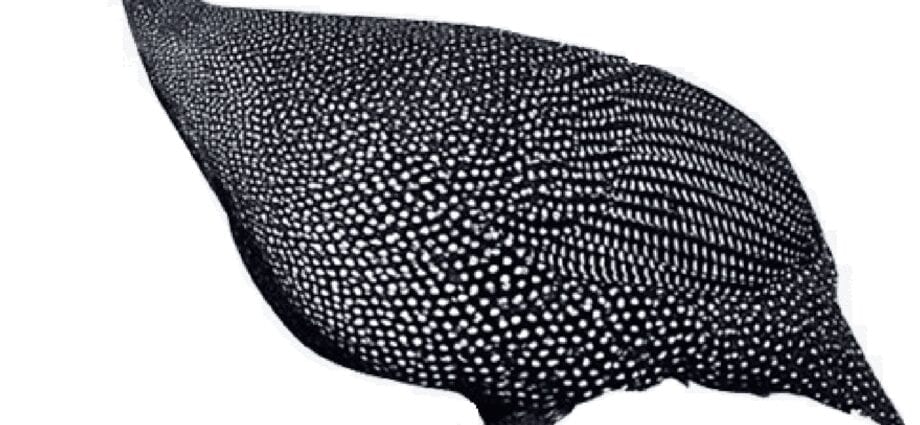Contents
Description
Guinea fowl is an African bird that appeared in Europe in ancient times. Then they forgot about it, and only in the 15th century, Portuguese navigators brought the guinea fowl to Europe again. It got its Russian name from the word “tsar”, since it first appeared in Russia as a decoration of the royal court.
Guinea fowl weighs about a kilogram – one and a half kilograms. Its meat, according to experts, tastes like pheasant meat. Its meat has less fat and water than chicken.
In terms of protein composition, the meat of guinea fowl is much more saturated than that of other domesticated birds; it contains about 95% amino acids. Such a meat product is useful in the constant diet of both adults and children; it is especially beneficial for the sick, pensioners and pregnant women. Caesar meat is rich in water-soluble vitamins (mainly of group B), as well as minerals.
Types and varieties
Wild relatives of the domestic guinea fowl live in Africa and serve as an object of hunting there. In Europe, only domestic guinea fowls are known – that is, tamed ordinary guinea fowls.

Over the years of selection, several breeds of domestic guinea fowl were bred. In Russia, the Volga white, Zagorsk white-breasted, cream and gray-speckled breeds are known. Much more actively than in Russia, guinea fowls are bred in the countries of Central Asia, Transcaucasia, in Italy, France, our country; in these countries their own breeds of domestic guinea fowls are known.
How to choose and store
Most of the guinea fowls that are sold in Russia are three months old (or rather, grown up to the age of 75-80 days), their meat is drier. Guinea fowl reared before 3.5, 4 or 5 months is more plump.
Guinea fowl meat has a bluish tint, as it is low in fat. Press down on the meat with your finger – the hole on it should disappear. If the hole remains, this indicates a low quality of the product. Don’t buy frozen meat with a lot of ice.
It is better to store guinea fowl meat in the refrigerator for no more than two days. Place the chilled guinea fowl in a vacuum container and store on the bottom shelf of the refrigerator for up to two days.
It is better to store guinea fowl meat in the freezer for no more than three months.
Composition and calorie content
Compared to other types of poultry meat, guinea fowl meat is less fatty and watery (similar to the meat of wild birds), which makes it highly valued. 100 grams of the product contains:
- proteins – 21 g,
- fat – 2.5 g,
- carbohydrates – 0.6 g,
- ash – 1.3 g
- Everything else is water (73 g).
Energy value – 110 kcal.

Appearance and taste
To distinguish a guinea fowl carcass, you need to know what it looks like. Here are the main characteristics: Weight. Poultry is allowed to slaughter, as a rule, at the age of 3-5 months, so it weighs a little – up to 1.5 kg. Of course, the older the bird, the more plump its carcass looks. Skin. The skin of a guinea fowl carcass is very thin, so red meat is visible through it, which can make the carcass look brown.
In addition, the skin is darker than that of chicken, since it contains a large amount of myoglobin – a protein that resembles hemoglobin in structure and function. Colour. The meat has a bluish tint, but do not be afraid of this, since this color is due to the low amount of fat in it.
Guinea fowl fillet contains a large amount of hemoglobin, therefore it may have a brown color. After heat treatment, the meat brightens and becomes almost white. Bones. Guinea fowl has fewer bones compared to chicken. In addition, they are not so large, which makes the carcass look rather miniature.
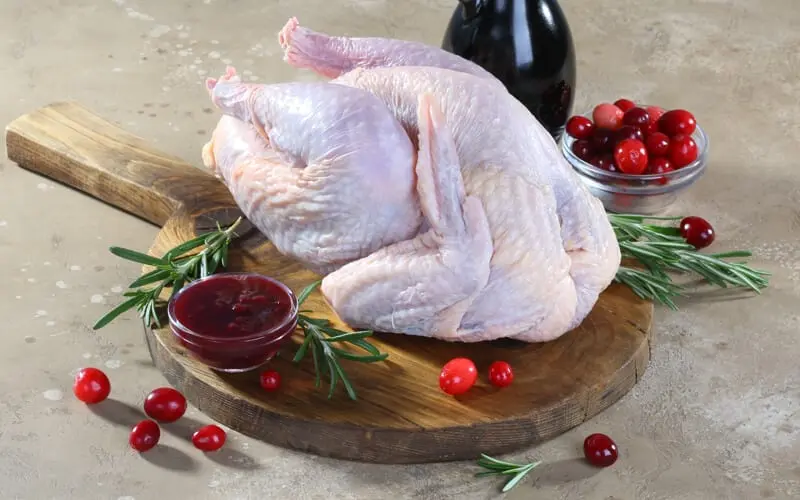
Guinea fowl meat tastes like pheasant or game, not chicken, because it has less liquid (only 74.4 g per 100 g) and higher fiber density. Plus, it’s not as fatty as chicken.
The benefits of guinea fowl
Guinea fowl meat contains many nutrients that can help support human immunity. After eating eggs, the process of assimilation of food improves. The cooked food tastes lean and juicy compared to chicken or duck. Guinea fowl meat contains:
- amino acids;
- histidine;
- threonine;
- valine;
- B vitamins;
- minerals – sulfur and chlorine;
- vitamins PP and C.
The beneficial properties of a natural product, both carcasses and eggs, obtained from a farm, saturate the human body with proteins and amino acids necessary to restore the functioning of the gastrointestinal tract. For people suffering from high cholesterol, natural foods are essential for a healthy diet. A meat dish in combination with a therapeutic diet allows you to quickly restore the human immune system and establish internal metabolic processes.
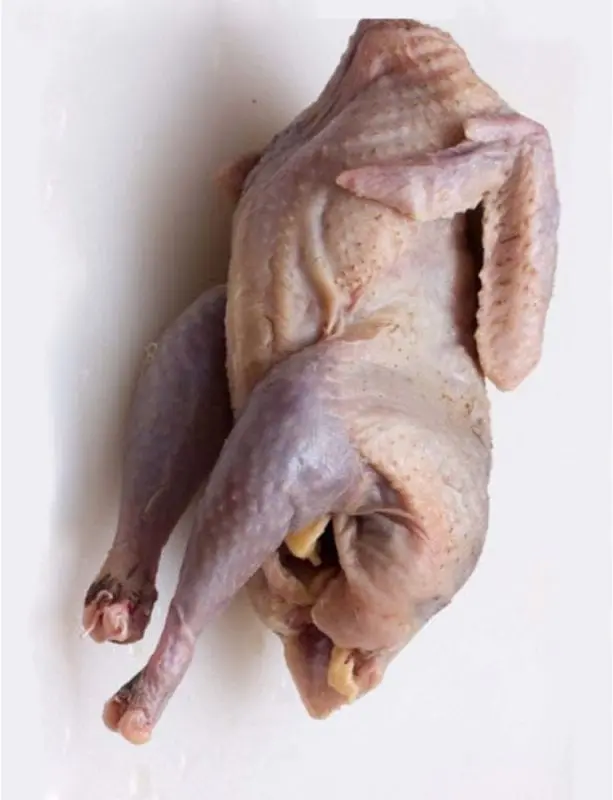
The beneficial properties of such a product will help people with diseases of the vascular system for timely prevention. The B vitamins contained in food derived from guinea fowl enhance therapy for people at risk of anemia and diseases of the central nervous system. A natural ingredient in a balanced diet will protect the eyes, stomach and skin from unwanted allergic reactions during the period of severe treatment.
The beneficial properties of quality products and eggs help not only patients or people with certain diseases, but also healthy adults or children. They use delicious dishes from fatigue or during the period of seasonal vitamin deficiencies. Minerals contained in meat (chlorine, sulfur, manganese, potassium, magnesium and calcium) help to quickly cope with colds and flu, which threatens adults and children with weakened immune systems.
Harm and contraindications
Guinea fowl meat is a valuable product that cannot harm the human body, since there are no harmful substances in its composition. Meanwhile, you need to understand that this is a protein product that cannot be abused, otherwise the stomach will be overloaded, which can lead to such unpleasant symptoms: a feeling of overeating and heaviness in the abdomen; disorder of the digestive system; nausea.
With regard to contraindications, these include only the individual intolerance to the components that are contained in meat.
Guinea fowl in cooking
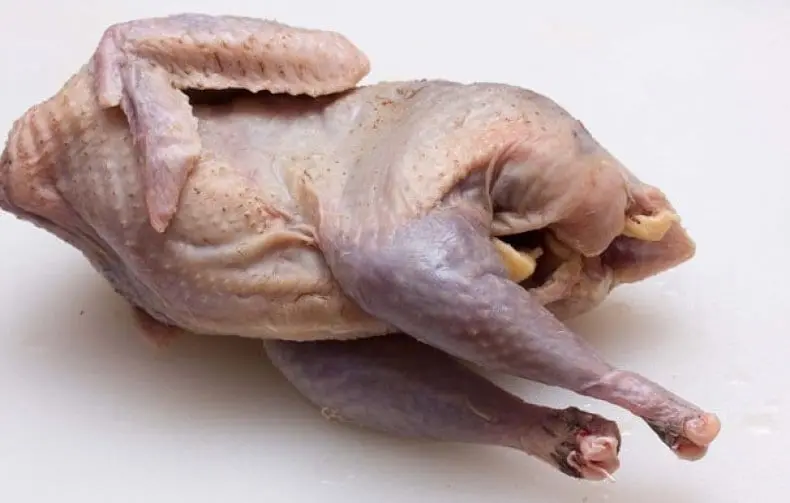
Ancient and modern cookbooks contain hundreds of recipes for cooking guinea fowl meat. The most delicious and nutritious dishes are prepared from young poultry (100-120 days old), and more mature guinea fowls are distinguished by tough and dry meat, which needs additional vegetable and animal fats to improve its taste.
Tsar’s poultry tastes perfect for any cooking method: roasting and stewing, roasting and grilling, smoking and drying. But the unusual aroma of game is most vividly revealed in those cases when the guinea fowl is baked with herbs and fruits over an open fire.
European culinary schools recommend grilling or grilling guinea fowl after marinating in fruit and berry syrup for 12-15 hours. The guinea fowl carcass soaked in a marinade with spices and smoked on juniper smoke is a “signature” dish of Spanish and Portuguese chefs.
How many countries – so many options for cooking healthy guinea fowl meat:
- In Iran – meat marinated in honey, cinnamon and a mixture of peppers, baked over an open fire and served with rice;
- In Italy – fried poultry pieces are seasoned with lots of traditional herbs or guinea fowl stuffed with cottage cheese, spicy cheese and herbs is cooked in the oven;
- In Azerbaijan, pilaf with guinea fowl, hot pepper and cilantro is prepared for the table on religious holidays;
- In Greece, they prefer a healthier diet and serve guinea fowl stewed in their own juice or fried with olives, cherry tomatoes and plenty of hot fresh peppers.
Guinea fowl in the oven with garlic and white wine
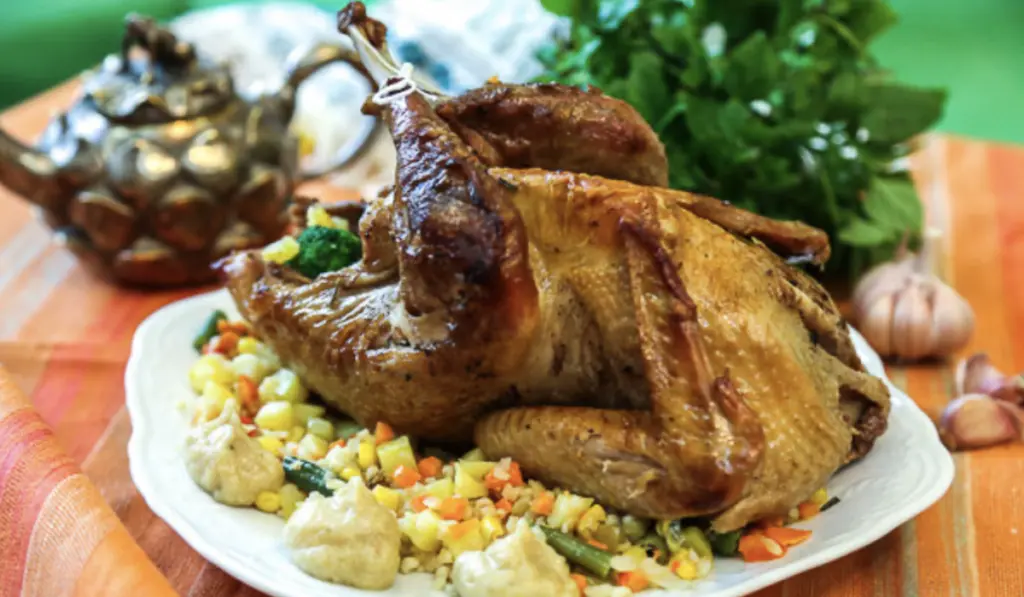
For a guinea fowl recipe you will need:
- guinea fowl (or chicken) – 1 pc. (about 1.8 kg)
- garlic – 2-3 heads
- butter – 10g
- olive oil – 1/2 tablespoon
- rosemary – 6 branches
- rosemary (leaves) – 1 tbsp (with a slide)
- dry white wine – 1 glass
- salt to taste
- ground black pepper – to taste.
Coking
- Wash the guinea fowl, dry well with a paper towel and rub the carcass with salt and pepper.
- Melt butter and olive oil in a frying pan. Put the guinea fowl in the oil and fry, turning the carcass from one side to the other, for about 15 minutes. The guinea fowl should brown evenly. Put the fried carcass on a plate and cover with foil to keep the guinea fowl warm.
- Put cloves of garlic and rosemary sprigs in the oil left after frying the guinea fowl. Heat them in oil until a spicy aroma appears.
- Return the guinea fowl back to the pan, sprinkle with chopped rosemary leaves
- and pour white wine into the pan around the guinea fowl. Shake the contents of the pan, let it sweat a little and remove from the stove.
- Now there are two options. Alternatively, cover the pan with foil and bake the guinea fowl in the pan. Or, as I did, transfer the guinea fowl to an ovenproof dish, add garlic with rosemary and wine to it, which were in the pan. Bake (covered) for 1 hour in an oven preheated to 190C. Then remove the lid (or foil) and bake for another 10 minutes until the meat is browned.
- Transfer the finished guinea fowl to a dish and cook garlic puree for it. To do this, peel the garlic cloves baked in wine and chop with a knife. Salt to taste. Serve mashed potatoes to the finished guinea fowl with garlic in white wine.
Enjoy your meal!










